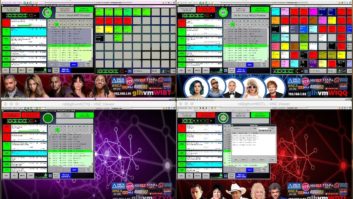The long-awaited determination of Internet radio copyright royalty rates and procedures from the Librarian of Congress in June started the clock ticking for compliance.
While speculation swirled that a rescuer would arrive on a white horse (perhaps Congress, perhaps the courts), as of mid-July the first statutory license payments to copyright holders will be due Oct. 20.
(Webcasters do not have to use the statutory license. They have the option of negotiating directly with copyright holders for the right to play their music over the Internet. But Congress, accurately predicting the contentiousness between the record labels and Webcasters, put provisions for the statutory license into the Digital Millennium Copyright Act.)
The Librarian’s decision can be thought of as having divided Internet radio’s recent timeline into three parts:
* From Oct. 28, 1998, the effective date of the governing Digital Millennium Copyright Act, through Aug. 31, 2002, the day before the effective date of the Librarian of Congress’ determination. Fees for this period will be due on Oct. 20, 2002.
* From Sept. 1, 2002 through Dec. 31, 2002, during which the rates and rules of the Librarian’s determination will continue to apply. Payment periods are monthly, with payments to be made on or before the 45th day following the end of a month. (For instance, September 2002’s fee will be due on or before Nov. 14, 2002.)
* From Jan. 1, 2003 forward, for which a newly empanelled Copyright Arbitration Royalty Panel will recommend new rates and rules.
Copyright fees for music played over the Internet are determined “per sound recording, per listener,” which is collectively referred to as a “performance.” (A listener is defined as a machine, not a person. As stated in the Librarian’s determination, “if more than one person is listening to a transmission made to a single machine or device, those persons collectively constitute a single listener.”)
The Librarian set the fees at seven one-hundredths of a cent per performance for commercial licensees, including commercial terrestrial radio stations, and two one-hundredths of a cent per performance for non-commercial licensees.
The licensee has the choice of paying those fees based on actual records of performances, or estimating listeners and recordings played based on a formula prescribed by the Librarian.
In either case, the Librarian stipulated that the receiving agent is obligated to provide a form, most likely a database template, with which to file this information; but at press time, that agent, SoundExchange, did not have such materials available. Look for them at www.soundexchange.com after the end of August.
Using the Librarian’s formula for estimating the number of performances, an Internet-only Webcaster plays 15 sound recordings an hour, an AM or FM broadcaster simulcasting his programming over the Internet plays 12 sound recordings an hour, except in the case of a news, business, talk or sports station, which plays one sound recording an hour.
The streamer can use those numbers to come up with his fees owed, or use his actual sound recording playlist to calculate his fees owed. The licensee still has to come up with his Aggregate Tuning Hours in order to have a “number of listeners” to multiply the Librarian’s suggested “number of songs” per hour.
Crunching numbers
The appropriate number of sound recordings is multiplied by the Aggregate Tuning Hours to determine the total number of performances. Aggregate Tuning Hours are defined in the determination as “the total hours of programming that the Licensee has transmitted over the Internet during the relevant period to all end users from all channels and stations that provide audio programming consisting, in whole or in part, of eligible non-subscription transmissions.”
In other words, if a Webcaster sent streams to 10 different PCs or other Internet listening devices for one hour, that would equal 10 Aggregate Tuning Hours.
Once the number of performances is multiplied times the applicable (commercial or non-commercial) copyright rate, there is one additional step. An additional 8.8 percent of the copyright fee is added to pay for ephemeral recordings. Ephemeral recordings are incidental recordings made to hard drives in the process of Webcasting a stream over the Internet.
In summary, the first job of the Webcaster using the statutory license is to calculate the number of “performances” for the period from Oct. 28, 1998 through Aug. 31, 2002, using either actual listening and sound recording play figures, or using actual listening and the Librarian’s suggested sound recording play figures.
That number of performances, multiplied times the appropriate copyright fee (seven one-hundredths of a cent for commercial Webcasters), is the amount due to the copyright holder’s designated agent on or before Oct. 20, 2002.
The Librarian set a minimum rate for statutory licensees of $500 per year. Payment of the fees is to be made to the designated agent, Sound Exchange, which will disburse the fees to the appropriate copyright holder.
Payment of these fees does not absolve Internet radio operators for responsibility to pay music composer and publisher fees to the respective agencies.
Almost as onerous as the fee for Internet music play were the record-keeping requirements proposed by the CARP. In a separate announcement, the Library of Congress announced that, on an interim basis, these requirements would be greatly simplified. At press time, the interim requirements had not been announced, nor was there a schedule to do so.
Those who opt for the statutory license also agree to comply with a number of rules that prevent pre-announcement of upcoming sound recordings to be played, and limit the number of recordings by a single artist that may be played during a specific time period.












